Galina Salnikova and Nelli Porseva, a student and teacher at Gymnasium 164 in Zelenogorsk, Russia were featured in their local TV news! (Available only in Russian)
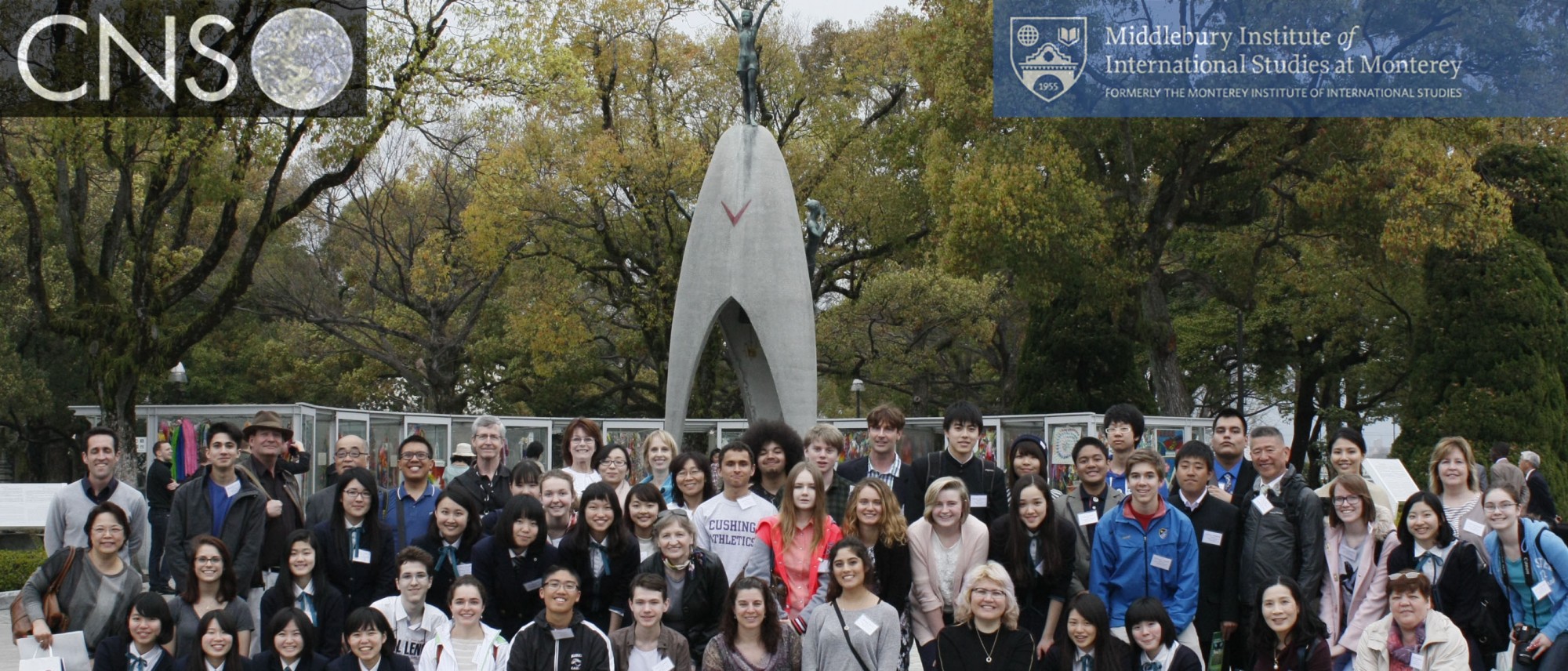
Galina Salnikova and Nelli Porseva, a student and teacher at Gymnasium 164 in Zelenogorsk, Russia were featured in their local TV news! (Available only in Russian)
Opening Speeches
U.S. Schools
Choate Rosemary Hall, Walingford, CT
Dr. Olga Mohan High School, Los Angeles, CA
Harker School, San Jose, CA
Pacific Grove High School, Pacific Grove, CA
Punahou School, Honolulu, HI
Rock University High School, Janesville, WI
Santa Catalina School, Monterey, CA
Japanese Schools
Hiroshima Jogakuin Senior High School, Hiroshima
Kansai Soka Senior High School, Katano
Kwassui High School, Nagasaki
Nagasaki Nanzan High School, Nagasaki
Ritsumeikan Uji High School, Kyoto
Soka Senior High School, Tokyo
Russian Schools
Gymnasium No 41, Novouralsk
Gymnasium No 164, Zelenogorsk
Lyceum, Lesnoy
Presentations
US Schools –
2. Dr. Olga Mohan High School, Los Angeles, CA on A Case Study of a Nuclear-Armed North Korea: Potential Threats, Present Crisis, and Possible Solutions
3. Harker School, San Jose, CA on Historical Precedents and Policy Analysis in the Development of Proposed Nuclear Mishap – Response Plans
4. Pacific Grove High School, Pacific Grove, CA on Global Nuclear Security:
An Environmental Perspective
5. Punahou School, Honolulu, HI on Global Nuclear Dangers And a Plan to Address Them
6. Rock University High School, Janesville, WI On the Reduction of Weapons-grade Fissile Material via Civilian Nuclear Power: The Efficacy of Arms Reduction through a Civilian Nuclear Power Initiative
7. Santa Catalina School, Monterey, CA on Staircase to Global 1
Japanese Schools –
2. Kansai Soka Senior High School, Katano on Two Humanistic Weapons to transform global nuclear vulnerability
3. Kwassui High School, Nagasaki on The World Is Never Secure – The myth of nuclear safety
4. Nagasaki Nanzan High School, Nagasaki on Understanding Nuclear Vulnerability and Our Efforts for a Peaceful World
5. Ritsumeikan Uji High School, Kyoto on From the Past to the Future
6. Soka Senior High School, Tokyo on Let’s make a paradigm shift
Russian Schools –
2. Gymnasium No 164, Zelenogorsk on The Road to Take
3. Lyceum, Lesnoy on Close Calls with Nuclear Weapons: Challenges and Possible Solutions
“I would like to start off by thanking Bill Potter and the James Martin Center for sponsoring this wonderful and unique conference. I have believed for many years now that the only way I would want to deal with this nuclear problem is through education and the education has to start young, at high school. And Bill Potter is going to pioneer in recognizing this best and the most successful program on the way in the country to actually implement it. So, Bill, Congratulations on the wonderful work. I have to tell you also how impressed I was by the talks I heard this morning and I want to thank all the students who gave the talk and all the other high school students who are here and preparing to get the same informed education about this one existential threat to you and your families and to the whole world. I would be remiss if I not also recognize to thank the teachers and the principals with whom you worked to help you prepare for this event. Anything that we can do to encourage the teachers and the principals to move forward on this is critically important. I do not believe we will really deal effectively with the nuclear problem until the youth of our country become fully understanding about how dangerous this is to their future and start to work actively to reduce this danger and to eliminate it.”
Please see Dr. Perry’s entire speech.
Masako Toki
April 28, 2016
Students and teachers from Japan and Russia joined peers from the United States at a conference on nuclear nonproliferation and disarmament convened by the James Martin Center for Nonproliferation Studies (CNS) at the Middlebury Institute of International Studies at Monterey (MIIS). The conference featured former US Secretary of Defense William J. Perry. The Critical Issues Forum (CIF) annual conference took place on April 15-16 at Santa Catalina School in Monterey that co-hosted the conference.
Each year, the CIF conference takes place at a time when the world leaders are also tackling challenges posed by nuclear dangers. This year’s conference was no exception. This parallel timing underscores for the students that they are engaging with vital, real-world issues through the project. As dedicated students studying disarmament and nonproliferation, these young people will be essential to reducing nuclear risks and contributing to the goal of peace and security of a world free of nuclear weapons.
Just a few days before the CIF conference, the Group of Seven Foreign Ministers meeting was held in Hiroshima, and for the first time, the incumbent US secretary of state visited the Hiroshima Peace Memorial Museum. Also a few weeks prior to the CIF conference, President Barack Obama convened the final Nuclear Security Summit in Washington, DC, where over fifty world leaders gathered to take concrete measures to enhance nuclear security.
Former United States Secretary of Defense Dr. William Perry and his daughter, Ms. Robin Perry, joined the conference for the entire second day’s session, which featured a dialogue session between him and the students, moderated by Dr. William Potter, CNS founding director. This direct interaction with a former top-ranking US defense official who had been deeply involved in US nuclear weapons policy was an exciting and rare opportunity for participants.
As an additional enhancement to the prestige of the conference, Japanese Foreign Minister Fumio Kishida sent a congratulatory message to the CIF participants, delivered at the conference by Japanese Consul General in San Francisco Mr. Jun Yamada. Mr. Kishida himself participated last year’s CIF conference that was held in Hiroshima to greet participants. The CIF conference was also fortunate to have Professor Mitsuru Kurosawa from Osaka Jogakuin University and the founding president of the Japan Association of Disarmament Studies as a commentator.
Under this year’s theme, “Global Nuclear Vulnerability: Lessons for a More Secure and Peaceful World,” students held informed and dynamic discussions that built upon their semester-long preparation as part of the CIF project. Students and teachers effectively inspired each other and learned from other schools’ presentations. It is truly encouraging to see these young future leaders working together to find ways to reduce nuclear dangers.
Students’ Conference
The CIF conference on April 15 and 16 brought seven US high schools, six Japanese schools, and three Russian high schools to Santa Catalina to discuss global nuclear vulnerability, reducing nuclear dangers, and what each of these young leaders-in-training can do to make progress toward a goal of peace and security of a world free of nuclear weapons. Following an opening statement by Masako Toki, CIF project manager, Dr. William Potter warmly welcomed all the participants, congratulating their hard work to study this challenging but vital topic. He highlighted CNS’s mission to educate the next generation of nonproliferation specialists, and the importance of disarmament and nonproliferation education for high school students, which is very rare. As head of the hosting Upper School of Santa Catalina School, Dr. Kassandra Brenot cordially welcomed the participants from these three countries.

Kwassui High School students from Nagasaki gave their presentation titled – “IT’S NEVER SECURE - the myth of nuclear safety”
Throughout the months of preparation for the conference, the students immersed themselves studying the topic, “Global Nuclear Vulnerability: Lessons for a More Secure and Peaceful World.” Students examined the dangers of the current nuclear weapons situation, and investigated how close the world has come to nuclear weapons use, and many concluded that, in some respects, the risk of nuclear weapons is greater today than it was during the Cold War. They also explored the ways in which international nonproliferation and disarmament regimes function to prevent nuclear weapons from being used. Students also explored ways to prevent any future use of nuclear weapons. Then, through meticulous, insightful, and creative research, students presented their own solutions to these problems, demonstrating a solid understanding of this sophisticated and complex challenge.
To supplement and expertly guide students’ own research, CIF teachers had participated in the previous December, in an online teachers’ workshop on the relevant subjects. Using lectures and educational materials prepared by CNS experts, each school worked hard toward the spring conference.
Student Presentation Highlights (each school’s presentation video and file can be viewed here.
In their presentation, students from the host school, Santa Catalina in Monterey, California, examined how to avoid nuclear weapons use both accidentally and intentionally. Students shared their idea to disarm the majority of the nuclear weapons in the world slowly and gradually while maintaining the world stability. Dr. Olga Mohan High School from Los Angeles focused on the North Korea’s nuclear threats and how to solve this dangerous situation. Their studies included the recent nuclear weapons tests and background information. The students also highlighted the likelihood of a North Korean nuclear accident. Before the conference, the students and teacher interviewed several nuclear experts, and concluded their presentation with the UN Secretary General Ban Ki- Moon’s principle: “there are no right hands for wrong weapons.”
As first time CIF participants, Punahou School from Hawaii students’ research included an interview with a survivor of the atomic bombing in Hiroshima. This research also explored past close calls, including the Cuban Missile Crisis and the 1983 Soviet Nuclear False Alarm incident. Students also delineated the current nuclear weapon status that continues to present threats to humanity. In order to reduce the nuclear dangers, the students argued that it is essential to raise awareness of such a danger among young people. Thus, they proposed that high schools should create an international issues club where students and teachers can actively discuss and find solutions to global challenges. They also proposed to collect petitions to take US nuclear weapons off hair-trigger alert. As an effort to promote nuclear disarmament education, the Punahou students also proposed to coordinate educational activities with Hiroshima peace scholars.
Students from one of CIF’s “veteran” high schools, Choate Rosemary Hall, explored several existing nuclear threats, such as the continued existence of thousands of nuclear warheads across the globe, their proliferation, their status, and modernization by some countries, as well as issues of nuclear terrorism. In their proposal, Choate students argued that any progress in nuclear nonproliferation and disarmament requires US leadership, and that US diplomatic leverage can encourage other nations to follow suit The decisive unilateral actions to reduce stockpiles and lower hair-trigger alert status are important steps. The students also examined other solutions including realignment of spending priorities to reduce nuclear weapons funding and changing public perceptions.

Choate Rosemary Hall’s students gave their presentation on “Global Nuclear Vulnerability: Threats Seen and Unseen”
This year, six Japanese high schools participated, four of which were new to CIF—a warmly welcomed expansion of the project to other cities in Japan beyond Hiroshima and Nagasaki. One of the original schools, Hiroshima Jogakuin Senior High School, has been undertaking extensive nuclear disarmament and peace education activities, including meticulous scrutiny of excessive defense spending for nuclear weapons and the study of the risk of terrorist acquisition of nuclear materials or nuclear weapons. The students also highlighted lack of progress in nuclear disarmament. In order to achieve the goal of a world free of nuclear weapons, these students from the first city that was attacked by a nuclear weapon proposed to utilize education to promote nuclear disarmament. The students came up with an idea to create a special project entitled the Youth Education for a Nuclear Weapon Free World (YENFW) and create a universal textbook available online for free.
Another veteran school from Japan, Kwassui High School in Nagasaki, argued that nuclear weapons will never bring safety and security to the world, articulating three nuclear dangers: the use of nuclear weapons, nuclear weapons as deterrence, and nuclear weapons as a tool to gain interest. They investigated the reasons and causes behind these dangers, and how we can overcome them. The students argued that the current NPT regime is not sufficient to accomplish the goals of a world without nuclear weapons, highlighting the importance of creating a new treaty to ban nuclear weapons, as well as the need to raise awareness of the risk of nuclear weapons through educational activities among civil society, especially among young students.
One of the first-time participants, Soka Senior High School in Tokyo, asserted the importance of a paradigm shift in nuclear weapons from the concept that nuclear weapons are a necessary evil to an absolute evil to humanity. In order to make this paradigm shift, students suggested that we should take a multi-track diplomacy approach. As part of the effort to promote the importance of achieving a world without nuclear weapons, students introduced their promotional and educational video project.
All the students’ presentation will be posted on the CIF website. http://sites.miis.edu/criticalissuesforum/
Please see the CIF Conference Booklet for more information at http://sites.miis.edu/criticalissuesforum/files/2016/04/Untitled.pdf.
Keynote by and Conversation with Dr. William Perry
A highlight of this year’s CIF conference was the keynote speech by former Defense Secretary Dr. William Perry and the ensuing conversation with him and his daughter, Ms. Robin Perry.
CNS Director Potter introduced Dr. Perry as a man whose name has become “synonymous with government service, integrity, and common sense.” Dr. Potter highlighted Dr. Perry’s tremendous work in galvanizing efforts to secure nuclear stockpiles inherited by former Soviet states and presiding over the dismantlement of more than 8,000 nuclear weapons.
Before he started his keynote address, Dr. Perry kindly applauded CNS for holding this “unique and insightful” educational conference, saluting Dr. Potter and CNS for “pioneering” nonproliferation and disarmament education, and tireless and creative efforts to promote such education. He emphasized the importance of education to reduce nuclear dangers, and highlighted that starting such education at the high school level is an effective way to spark a lifelong engagement with the issue.
In his keynote remarks, Dr. Perry shared his unique and insightful thoughts on nuclear dangers, culled from his own experience through his long-term government service, including as secretary of defense. After witnessing the nuclear devastation first-hand in Hiroshima only a few months after the bombing, his role as an analyst during the 1962 Cuban Missile Crisis, as well as subsequent further nuclear crises during his time in government, Dr. Perry’s appreciation of what nuclear weapons can do to human beings and environment is an important gift to have shared with all CIF participants.

Dr. William Perry and his daughter Robin Perry along with the CNS Director Dr. William Potter during the conversation with CIF students.
Dr. Perry warned that we are now on the verge of a new nuclear arms race, and that we are drifting back to a Cold War mentality. The public, he said, is “blissfully unaware” of the new nuclear danger they face. He emphasized that the danger of nuclear catastrophe is greater today than it was during the Cold War. He is therefore is working tirelessly to reduce nuclear dangers through public education, especially youth: the best way, he said, “to deal with this nuclear problem is through education, and education has to start young, at high school.” This situation inspired him to write his new memoir, My Journey at the Nuclear Brink, which aims to educate the public about these dangers.
Please see his speech in the video below:
The conference also welcomed Ms. Robin Perry, Dr. Perry’s daughter and the executive director of the William J. Perry Project (http://www.wjperryproject.org), which produced a grim animated short she shared with CIF participants.
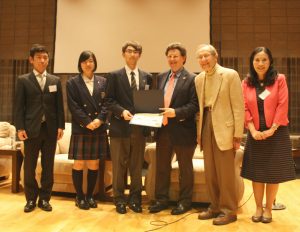
Dr. Perry and Dr. Potter congratulate participants from Soka Senior High School with Masako Toki, CIF project manager
While the scenario depicted in the film is fiction, it showcases the real plausibility of terrorists acquiring nuclear materials and developing an effective, improvised nuclear device. The project aims to educate and engage the public about the dangers of nuclear weapons in the twenty-first century.
After the video screening, Dr. Potter moderated the conversation between Dr. Perry and high school students. CIF students were not shy in asking questions to the former secretary of state. They lined up in front of microphones to ask Dr. Perry a variety of enthusiastic, interesting questions, including his views on how young students can fulfill the important role of reducing nuclear dangers, the dangers of North Korea’s nuclear threats, US-Russia relations, nuclear terrorism, and nuclear policies in the context of the US presidential election.
Message from Foreign Minister Fumio Kishida
Another treat for participants was the congratulatory message sent from Japanese Foreign Minister Mr. Fumio Kishida Delivered by Mr. Jun Yamada, Japanese Consul General in San Francisco, Foreign Minister Kishida highlighted the historic G7 foreign ministers meeting in Hiroshima, which provided the ministers with a chance to visit the Hiroshima Peace Memorial Museum, lay wreaths at the Cenotaph for the atomic bomb victims, and visit the atomic bomb dome. Mr. Kishida, a Hiroshima native, is well known as a strong disarmament advocate and his efforts toward creating a world free of nuclear weapons through disarmament education for youth. As part of such effort, Mr. Kishida reiterated his announcement from the Hiroshima G7 meeting that Japan will expand the Youth Communicators for a World without Nuclear Weapons Program to other countries as well. Many CIF students were appointed official “Youth Communicators,” including some American and Russian students, the first non-Japanese students so appointed.
Link to Consulate General of Japan in San Francisco Website in Japanese, and in English
MIIS Gradate Students’ Panel Discussions
The CIF conference also engaged graduate students in nonproliferation and terrorism studies. These young scholars shared their experiences with how the MIIS nonproliferation studies impacted their career decisions. Hearing how MIIS students’ experience interning at the United Nations Office for Disarmament Affairs, working for various international disarmament and nonproliferation conferences—such as the Nuclear Nonproliferation Treaty Review Conference and the UN General Assembly meetings—encouraged and inspired these CIF high school students to continue their academic and professional endeavors in the field. During a question-and-answer session, the high school students asked the MIIS students for their advice in terms of educational and career opportunities in nonproliferation and disarmament.
Conclusion
This year’s CIF conference again proved the importance of disarmament and nonproliferation education for youth as a way toward achieving the peace and security of a world without nuclear weapons. As Dr. Perry stated in his speech, the first step we must take to reduce nuclear danger is education, and CNS efforts to engage high school students in such a dynamic and multifaceted manner is one important contribution.
These high school students worked tirelessly, thinking critically about this complicated nuclear issue in order to find their own, innovative solutions to reduce nuclear dangers and make progress in nuclear disarmament. Many of these students realized that they are the ones who are responsible to achieve that goal. CNS hopes that this type of educational project will give more opportunities to young students to further raise their awareness of these global challenges, strengthen their determination to work toward this goal, and start something they can do, no matter how small it may seem.
In his recent memoir, My Journey at the Nuclear Brink, Dr. Perry elucidated in its final chapter: “… Dealing with the problem of nuclear dangers will take decades, and will ultimately need to be solved by today’s youth, in America and around the globe. My generation dealt with the nuclear dangers of the Cold War; later generations must deal with the deadly nuclear legacy that we left behind.” For these youths to inherit this daunting task, education is essential.
This year’s CIF program is funded by the United States-Japan Foundation, a New York-based organization supporting activities to deepen friendship and understanding between American and Japanese citizens, and the Tokyo Club, Japan’s oldest and most prestigious private club. For more information on the CIF program, please visit the CIF website at http://sites.miis.edu/criticalissuesforum/.
See also
Monterey plays host to disarmament conference for teens Monterey Herald, April 14, 2016
Participating Schools
United States
Choate Rosemary Hall, Wallingford, CT
Harker School, San Jose, CA
Dr. Olga Mohan High School, Los Angeles, CA
Pacific Grove High School, Pacific Grove, CA
Punahou School, Honolulu, HI
Rock University High School, Janesville, WI
Santa Catalina School, Monterey, CA
Japan
Hiroshima Jogakuin Senior High School, Hiroshima
Kansai Soka Senior High School, Katano
Kwassui High School, Nagasaki
Nagasaki Nanzan Senior High School, Nagasaki
Ritsumeikan Uji Senior High School, Kyoto
Soka Senior High School, Tokyo
Russia
Gymnasium No 41, Novouralsk
Gymnasia No 164, Zelenogorsk
Lesnoy, Lyceum
Please see the video clip featuring Gymnasium 164 in Zelenogorsk, Russia.

MEDIA ADVISORY Contact: Jason Warburg
March 28, 2016 (831) 647-3516
jwarburg@miis.edu
April 15-16 Conference at Santa Catalina High School in Monterey Sponsored by the Middlebury Institute’s James Martin Center for Nonproliferation Studies
Monterey, Calif. – Students and teachers from Japan and Russia will join peers from the United States at a conference on nuclear nonproliferation and disarmament convened by the Middlebury Institute of International Studies at Monterey and featuring former U.S. Secretary of Defense William Perry. The annual conference will take place on April 15-16 at Santa Catalina School in Monterey.
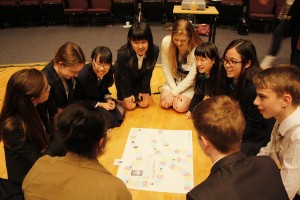
At the 2016 Critical Issues Forum (CIF) conference, students from six Japanese high schools (Hiroshima, Nagasaki, Osaka, Kyoto and Tokyo), three Russian high schools in closed nuclear cities (Lesnoy, Novouralsk, and Zelenogorsk), and seven U.S. high schools in four different states (California, Connecticut, Hawaii, and Wisconsin), are scheduled to present their studies on the topic of “Global Nuclear Vulnerability: Lessons for a More Secure and Peaceful World.” The CIF program is managed by the James Martin Center for Nonproliferation Studies at the Middlebury Institute of International Studies at Monterey.
Dr. William Perry, Secretary of Defense under President Bill Clinton, will participate as a guest speaker at the conference during the morning of April 16, along with his daughter Ms. Robin Perry. Dr. Perry is well known for his nuclear disarmament, nonproliferation and nuclear security leadership, especially for his op-ed pieces advocating a world free of nuclear weapons, co-authored with other former high-ranking governmental officials. His appearance in Monterey is part of his ongoing efforts to draw attention to issues related to nuclear policy and disarmament.
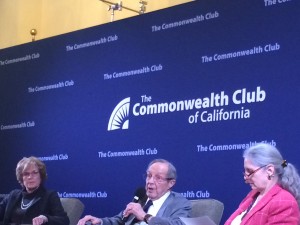
This year’s CIF participants will examine the dangers of the current nuclear weapons situation, and investigate how close we have come to nuclear weapons use. These young leaders from around the world will tackle one of the most pressing and challenging security issues of our time, exploring how international nonproliferation and disarmament regimes are working to prevent nuclear weapons technology from being spread or used.
The April 15-16 CIF conference is the culmination of a semester-long program for high school students that is designed to develop critical thinking skills and to engage students and teachers around issues related to international peace and security. All participating students are expected to present and exchange their findings on their chosen topic in a creative and innovative way, followed by an open discussion centered on a question and answer session with their peers and teachers. Students will also engage in interactive and cross-cultural activities during the conference, and will have the opportunity to interact with graduate students studying nuclear disarmament issues in the Institute’s Nonproliferation and Terrorism Studies program.
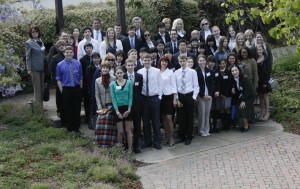
This year’s CIF program is funded by the United States-Japan Foundation, a New York-based organization supporting activities to deepen friendship and understanding between American and Japanese citizens, and the Tokyo Club, Japan’s oldest and most prestigious private club. For more information on the CIF program, please visit the CIF website at sites.miis.edu/criticalissuesforum, and view this short video.
What: Critical Issues Forum
When: April 15 from 8:30 a.m. to 5:00 p.m.
April 16 from 8:30 a.m. to 1:45 p.m.
Where: Mary Johnson Recital Hall, Santa Catalina School
1500 Mark Thomas Drive, Monterey
Contact: Masako Toki 831-915-6162 (mobile)
# # #
The Middlebury Institute of International Studies at Monterey has been preparing graduate professionals for global careers since 1955. Located in Monterey, California, the Institute offers advanced degrees in international business, international education management, international environmental policy, international policy studies, language teaching, localization management, nonproliferation and terrorism studies, public administration, and translation and interpretation, as well as a variety of specialized certificates and programs. The Institute, whose approximately 750 students come from more than 50 countries, is also home to the James Martin Center for Nonproliferation Studies, the Monterey Terrorism Research and Education Program (MonTREP), the Center for the Blue Economy, and the Center for Conflict Studies. Visit www.miis.edu for campus news or to find an expert.
The James Martin Center for Nonproliferation Studies (CNS) strives to combat the spread of weapons of mass destruction (WMD) by training the next generation of nonproliferation specialists and disseminating timely information and analysis. CNS at the Middlebury Institute of International Studies at Monterey is the largest nongovernmental organization in the United States devoted exclusively to research and training on nonproliferation issues. CNS news releases and photos are available at http://www.nonproliferation.org.
Link to the PDF version of the Media Advisory. Click here!
See Inside the Underground Bunker That Could Launch a Nuclear War by Dan Sagalyn
Time for Russian Action by Richard Fieldhouse
Lets End the Peril of a Nuclear Winter by Alan Robock and Owen Toon
China May Put Its Nuclear Weapons on High Alert by Elliott Negin
Obamas Shop til you Drop by Tom Collina
The Nuclear Threat More Complex and Unpredictable Than Ever
Back to the Nuclear Brink by Daryl G. Kimball
Accidental Nuclear War: A Lifetime of Close Calls
Three Minutes To Midnight: Closer To Nuclear Conflict Than We Think by David Barno and Nora Bensahel
Why you should care about nukes!
Beyond the Summit: New Approaches to Nuclear Security by Jerry Brown and Sec William J Perry
by Masako Toki
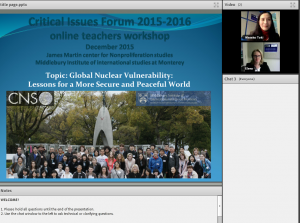
Ms. Elena Sokova, CNS Deputy Director, welcoming CIF teachers at the online workshop
The 2015-16 Critical Issues Forum (CIF) kicked off with an online teachers’ workshop, held during the first and second week of December, the final month of the seventieth anniversary year of the atomic bombing of Hiroshima and Nagasaki. As a flagship education project of the James Martin Center for Nonproliferation Studies (CNS) of the Middlebury Institute of International Studies at Monterey (MIIS), CIF is a unique nonproliferation and disarmament education project for high school teachers and students around the world to promote awareness of the importance of these issues. Ensuring disarmament and nonproliferation education for next generations has become increasingly important; the average age of atomic bomb survivors is now over eighty, and these hibakusha are vital for passing on the memory of the effects of the use of nuclear weapons.
This year’s topic “Global Nuclear Vulnerability: Lessons for a More Secure and Peaceful World,” encourages CIF participants to examine and investigate nuclear “close calls,” human and technical mistakes that nearly led to the accidental or mistaken use of nuclear weapons. Students will explore the current status of nuclear arsenals and how international nonproliferation and disarmament regimes are preventing nuclear weapons from being used. Students will also assess the degree to which the current nonproliferation and disarmament regime is effectively working and contributing to making a safer world. Moreover, students will examine how the recent international environment, such as the deteriorating US-Russia relationship, could increase the risk of the use of nuclear weapons.
Students will need to investigate whether there are any ways to prevent the future use of nuclear weapons, and explore possible pathways toward the goal of total elimination of these weapons. Although some may strongly believe that the total elimination of nuclear weapons is the only solution, students will also need to study if there are practical ways to prevent the use of nuclear weapons while they still exist.
Teachers from Japan, Russia’s closed nuclear cities, and US schools around the country participated in the online workshop. Participants engaged both synchronously with the online workshops and asynchronously, at a later, more convenient for them, given time differences. All workshop sessions were recorded and remain available on the CIF website for asynchronous viewing.
CNS deputy director Ms. Elena Sokova gave welcoming remarks, congratulating the CIF teachers for their important work in disarmament and nonproliferation education for the next generations. She also highlighted the successful spring conference that was held in Hiroshima in April 2015 that commemorated the seventieth anniversary of the atomic bombings.
She emphasized the importance of remembering horrendous human effects of the use of nuclear weapons in Hiroshima and Nagasaki. She delineated the current alarming world nuclear weapons situation and the need for this type of disarmament and nonproliferation education in order to improve the security environment, highlighting the importance of raising awareness among the future leaders, the danger of nuclear weapons, and nuclear vulnerability.
In her remarks, she quoted former US Defense Secretary William Perry’s new book, “My Journey at the Nuclear Brink,” which is directly relevant to this year’s topic. In his book, Dr. Perry introduced six pivotal experiences in his life and lessons about nuclear weapons that he drew from those experiences. And these lessons all contribute to reducing nuclear dangers—also one of the goals of this year’s CIF project.
This year’s teachers’ workshop lectures covered a wide range of topics related to global nuclear vulnerability. Dr. Benoit Pelopidas, a distinguished nonproliferation scholar, provided an introductory lecture to this year’s topic. In a separate lecture, Dr. Pelopidas discussed the case studies of close calls of nuclear weapons, highlighting in particular the Cuban Missile Crisis. In his final lecture, he examined implications of past and present nuclear weapons policies and practices, emphasizing the importance of future leaders, especially high school students, to study this topic in order to understand the nuclear danger and consider how to reduce the nuclear risk.
Other lectures covered global nonproliferation regimes, the current world status of nuclear weapons, the basics of nuclear weapons, the 2015 Review Conference of the Treaty on the Non-Proliferation of Nuclear Weapons (NPT), nuclear disarmament initiatives, and scientific perspectives of nuclear weapons.
Dr. Nikolai Sokov, CNS senior fellow and leading expert of Russian nuclear policy, discussed US-Russia arms control and nuclear policies to help CIF participants better understand the recent heightened tensions between the two countries and its impact on international nuclear nonproliferation regimes.
Dr. Jeffrey Knopf, chair of the Nonproliferation and Terrorism Studies program at MIIS, presented an overview of the current nuclear situation and challenges to nuclear disarmament and nonproliferation. He also highlighted modern nonproliferation concerns and some causes of possible use of nuclear weapons.
Ms. Gaukhar Mukhatzhanova, director of CNS’s International Organization and Nonproliferation Program (IONP), articulated what happened at the 2015 NPT Review Conference, and shared her analysis on the causes of the failure of the Review Conference and uncertainty of the future of disarmament efforts.
Dr. Ferenc Dalnoki-Veress, scientist-in-residence at CNS, explained how nuclear weapons work, breaking down the basic physics behind nuclear science. He also gave a lecture on the impact of the use of nuclear weapons from scientific perspectives.
Mr. Joe Brazda, an IONP research associate, explained international nonproliferation regimes and the role of international organizations.
For the complete lecture video and presentations, visit the CIF website’s teachers’ workshop page: http://sites.miis.edu/criticalissuesforum/2015/12/01/2015-2016-teachers-workshop-lectures/
After teachers have studied these topics using the online materials, they will work with their students at their own schools towards the Spring Conference that will be held at Santa Catalina School in Monterey, California, in April. This year, we expect to have several Japanese high schools from Hiroshima, Nagasaki, Tokyo, and Osaka, several US high schools from around the country, as well as schools from Russia’s closed nuclear cities.
CNS is grateful to the United States-Japan Foundation for their support of CIF.
For more information, please visit CIF website at http://sites.miis.edu/criticalissuesforum
2015-2016 Critical Issues Forum
Useful Resources
Topic: Global Nuclear Vulnerability: Lessons for a More Peaceful World
*Please note that more resources will be added to the section of “This year’s topic-specific resources.”
General resources
Nuclear Threat Initiative Tutorials
http://tutorials.nti.org/table-of-contents/
Melissa Gillis, “Disarmament: A Basic Guide”, United Nations
((NPT–section 4, beginning on page 31)
Which Countries Have Nuclear Weapons-BBC News World-Video
http://www.bbc.co.uk/news/world-24277021
United Nations Audio Visual Library of International Law– NPT
http://legal.un.org/avl/ha/tnpt/tnpt.html
United Nations Disarmament Education
http://www.un.org/disarmament/education/
US State Department–NPT
http://www.state.gov/t/isn/npt/
Nuclear Disarmament Resource Collection
http://www.nti.org/analysis/reports/nuclear-disarmament/
Global Zero Interactive Map
http://www.globalzero.org/map
Nuclear Notebook (for nuclear weapons numbers)
http://bos.sagepub.com/cgi/collection/nuclearnotebook
What is Nuclear?
www.whatisnuclear.com
Nick Touran, “What is Nonproliferation?”
http://www.whatisnuclear.com/articles/proliferation.html
U.S.-Russia Nuclear Arms Control, Council on Foreign Relations
http://www.cfr.org/arms-control-disarmament-and-nonproliferation/us-russia-arms-control/p21620
William Harris, Craig Freudenrich, Ph.D. and John Fuller, “How Nuclear Bombs Work”
http://science.howstuffworks.com/nuclear-bomb.htm
How Stuff Works: Nuclear Weapons
http://science.howstuffworks.com/search.php?terms=nuclear+weapons
Federation of American Scientists: The Nuclear Information Project
http://fas.org/issues/nuclear-weapons/
Nuclear Threat Initiative 3-D Research Model of Facilities
https://www.youtube.com/user/webmasternti2010?feature=mhee
This year’s topic-specific resources:
Back to the Nuclear Brink New! By Daryl G. Kimball March 2016
The Nuclear Threat is More Complex and Unpredictable Than Ever New! December 31, 2015
See Inside the Underground Bunker That Could Launch a Nuclear War New! By Dan Sagalyn, pbs newshour, Feb 25, 2016.
Reducing the Risk of Nuclear War: Taking Nuclear Weapons Off High Alert New!
Union of Concerned Scientists, Feb 12, 2016.
Six Things You Should Know About the U.S. Nuclear Weapons Arsenal New!
On Reinvent.net website, Feb 1, 2016.
Lowering Nuclear Risks: An Interview with Former Defense Secretary William Perry New!
Interviewed by Daniel Horner and Kingston Reif, Arms Control Today, Jan/Feb 2016
The Risk of Nuclear Catastrophe is Greater Today than during the Cold War New!
By William J. Perry, The Huffington Post, January 20, 2016
Nuclear weapons risk greater than in cold war, says ex-Pentagon chief New!
The Guardian, January 7, 2016
As U.S. Modernizes Nuclear Weapons, ‘Smaller’ Leaves Some Uneasy New!
William Broad and David Sanger, The New York Times, January 11, 2016
Nuclear Weapons Countries: Military Incidents New!
March 2014-November 2015
Global Zero
Beyond the Summit: New Approaches to Nuclear Approaches New! by Gov Jerry Brown and Sec William J Perry
Future of Life New!
Why you should care about nukes New!
William J. Perry Project Website
My Journey at the Nuclear Brink, (BOOK)
By William Perry, Former US Secretary of Defense
http://www.sup.org/books/title/?id=25448
My Personal Journey At the Nuclear Brink
Dr. William Perry, Former US Secretary of Defense,
http://www.europeanleadershipnetwork.org/my-personal-journey-at-the-nuclear-brink-by-bill-perry_633.html
Close Calls With Nuclear Weapons (Fact Sheet)
Union of Concerned Scientists
Close Calls With Nuclear Weapons
NTI
Avoiding War in Europe: The Risks From NATO-Russian Close Military Encounters
Ian Kearns – Arms Control Association
The Greatest Terrorist Threat: How to Stop Nuclear Material from Falling into the Wrong Hands
Sam Nunn, Richard Lugar, and Des Browne – Politico
Close Encounters: Risking an Accidental War
John Donnelly – CQ
Remembering the Cuban missile crisis, with humility
Benoit Pelopidas – European Leadership Network
NATO War Games Unwittingly Put Soviets and U.S. on ‘Hair Trigger’ in ’83, Analysis Suggests
Sam Roberts – New York Times
How a nuclear near-miss in ’95 would be a disaster today
Theodore Postol – Boston Globe
Disarm and Modernize
John Mecklin – Foreign Policy
5 Cold War Close Calls
Evan Andrews – History
Could U.S.-Russia Tensions go Nuclear?
Bruce Blair – Politico
20 Mishaps that Might Have Started a Nuclear War
Alan F. Philips – Nuclear Files
13 Times the U.S. Almost Destroyed Itself With It’s Own Nuclear Weapons
Bethan Owen – Deseret
Nuclear Command and Control: A History of False Alarms and Near Catastrophes
Eric Schlosser – NPR
Honey, There’s a Nuclear Bomb in the Yard
Japan Times
Analysis/Fact Sheets
Global Zero Report on Nuclear Risk Reduction: De-Alerting and Stabilizing the World’s Nuclear Force Postures
Global Zero
Too Close for Comfort: Cases for Nuclear Use and Options for Policy
Patricia Lewis, Heather Williams, Benoit Pelopidas, and Sasan Aghlani – Chatham House Report
Close Calls With Nuclear Weapons
NTI
Close Calls With Nuclear Weapons (Fact Sheet)
Union of Concerned Scientists
Country-specific Information
Arms Control Association
A web source on arms control containing issue briefs, fact sheets, threat assessment briefs, and current event reports.
http://www.armscontrol.org
Nuclear Threat Initiative Country Profiles
http://www.nti.org/e_research/profiles/index.html
Multimedia
Movies, videos, interactive maps
The Bomb
PBS Video
A powerful story of the most destructive invention in human history, outlining how America developed the nuclear bomb, how it changed the world and how it continues to loom large in our lives. Witness the raw power and strangely compelling beauty of rare views of above-ground nuclear tests.
http://video.pbs.org/program/bomb/
NukeMap by Alex Wellerstein
(Interactive Map that allows you to simulate the real life effects of a Nuclear Bomb in any area)
United Nations
http://www.unmultimedia.org/photo/
International Atomic Energy Agency
http://www.iaea.org/newscenter/multimedia
Comprehensive Nuclear Test Ban Treaty Preparatory Commission
http://www.ctbto.org/photos/
EU Non-Proliferation and Disarmament Conference 2015 First Plenary Session
The NPT Review Conference and the Future of Nuclear Disarmament
http://www.iiss.org/en/events/eu%20conference/sections/eu-conference-2015-6aba/plenary-1-b248
INTERNATIONAL ORGANIZATION Resources/General Information on Nuclear Disarmament
United Nations
United Nations Office for Disarmament Affairs (UNODA)
Main website for sources pertaining to disarmament containing spotlights on recent developments, updates and announcements.
http://www.un.org/disarmament/
United Nations Institute for Disarmament Research
http://www.unidir.org/
Treaty on the Non-Proliferation of Nuclear Weapons (NPT)
Text and documents from NPT and PrepCom Conferences.
http://www.un.org/disarmament/WMD/Nuclear/NPT_Review_Conferences.shtml
Applying a Disarmament Lens to Gender, Human Rights, Development, Security, Education and Communication: Six Essays
http://www.un.org/disarmament/HomePage/ODAPublications/CivilSocietyAndDisarmament/2012/NGO_pub_2012.pdf
Comprehensive Test Ban Treaty Organization
Main website for treaty text and status, recent news, international monitoring system status, and updates.
http://www.ctbto.org
Nuclear Weapons Free Zones
UNODA
Overview, map, definition
http://www.un.org/disarmament/WMD/Nuclear/NWFZ.shtml
Selected NGO/Research Institutes:
Acronym Institute
http://www.acronym.org.uk/
Arms Control Association:
http://www.armscontrol.org
Arms Control Today
http://www.armscontrol.org/aca/428
Bulletin of the Atomic Scientists
http://www.thebulletin.org/
Carnegie Endowment for International Peace’s Nuclear Policy Program
http://carnegieendowment.org/programs/npp/index.cfm?fa=proj&id=116
Center for Arms Control, Energy, and Environmental Studies
http://www.armscontrol.ru/
Center for Defense Information (joined the Project on Government Oversight)
http://www.pogo.org/about/cdi-joins-pogo.html
Center for Strategic and International Studies
http://www.csis.org/
Federation of American Scientists
http://www.fas.org
Global Security Institute
http://www.gsinstitute.org/
GlobalSecurity.org
http://www.globalsecurity.org/
Institute for National Strategic Studies
http://www.ndu.edu/inss/
International Institute for Strategic Studies (IISS)
https://www.iiss.org/
International Relations and Security Network (ISN)
http://www.isn.ethz.ch
International Campaign to Abolish Nuclear Weapons (ICAN)
http://www.icanw.org/
National Institute for Public Policy (NIPP):
http://www.nipp.org
Natural Resources Defense Council:
http://www.nrdc.org/nuclear/nuguide/guinx.asp
Nuclear Age Peace Foundation
https://www.wagingpeace.org/
PIR Center (Moscow)
http://www.pircenter.org
Ploughshares Fund
http://ploughshares.org/
Physicians for Social Responsibility (Nuclear Weapons)
http://www.psr.org/nuclear-weapons/
Reaching Critical Will
http://www.reachingcriticalwill.org/
Stockholm International Peace Research Institute (SIPRI)
http://www.sipri.se
Union of Concerned Scientists
http://www.ucsusa.org/nuclear-weapons
Blogs
Arms Control Wonk
http://armscontrolwonk.com/
Federation of American Scientists Strategic Security Blog
http://www.fas.org/blog/ssp/
Arms Control Now (Blog of Arms Control Association)
http://armscontrolnow.org/
New! Media Advisory Released!!
Japanese version!!

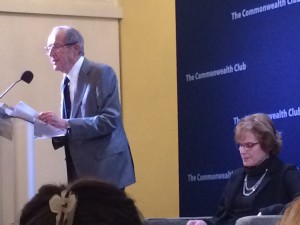
We are thrilled to receive over fifteen schools this year to join us for the 2016 CIF Student Conference!
US
Choate Rosemary Hall, Wallingford, CT Dr. Olga Mohan High School, Los Angeles, CA Harker School, San Jose, CA Punahou School, Honolulu, HI Rock University High School, Janesville, WI Santa Catalina School, Monterey, CA Pacific Grove High School, Pacific Grove, CA
Japanese
Hiroshima Jogakuin Senior High School, Hiroshima, Japan Kansai Soka Senior High School, Katano, Japan Kwassui High School, Nagasaki, Japan Nagasaki Nanzan Senior High School, Nagasaki, Japan Ritsumeikan Uji High School, Kyoto, Japan Soka Senior High School, Tokyo, Japan
Russian
Lyceum, Lesnoy, Russia Gymnasium 41, Nvouralsk, Russia Gymnasium 164, Zelenogorsk, Russia
The Santa Catalina Campus
The Lone Cypress Tree, 17 Miles Drive
To watch live stream online, enter the Adobe Connect Meeting room here!
URL: http://middlebury.adobeconnect.com/cifteachers/
Return to Workshop: Main Page
Tuesday, December 1st
2:00 PM – 2:30 PM (PST)
Welcome Remarks

Video Recording (Both Welcome Remarks and Overview)
Elena Sokova, Deputy Director, James Martin Center for Nonproliferation Studies
2:30 PM – 3:00 PM (PST)
Overview of the CIF Project and Teachers’ Workshop
Video Recording
Masako Toki, Project Manager, Nonproliferation Education Program and CNS Research Associate
3:00 PM – 4:00 PM (PST)
Introduction of 2015-2016 Mini Projects, Expectation and Outcome
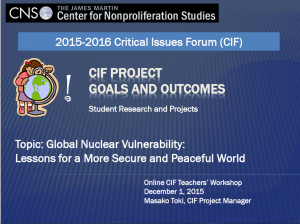
Video Recording
Masako Toki, Project Manager, Nonproliferation Education Program and CNS Research Associate
Wednesday, December 2nd
2:00 PM – 3:30 PM (PST)
Lecture 1: What are Nuclear Weapons, and the Effects of Use?: Scientific Perspectives, Part 1

Video Recording
Dr. Ferenc Dalnoki-Veress, Adjunct Professor and Scientist-in-Residence
Nuclear Glossary
Thursday, December 3rd
2:00 PM – 3:30 PM (PST)
Lecture 2: Nuclear Weapons in Today’s World: Where Are We, How Did We Get Here, and the Future
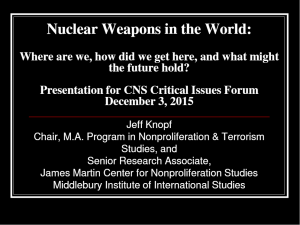
Video Recording
Dr. Jeffrey Knopf, Program Chair, Nonproliferation and Terrorism Studies, MIIS
4:00 PM – 5:00 PM (PST)
Lecture 3: Introduction to this Year’s Topic: Making Sense of Nuclear Vulnerability
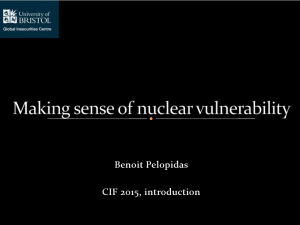
Video Recording
Dr. Benoit Pelopidas, Lecturer in International Relations, University of Bristol, UK
Friday, December 4th
10:00 PM – 11:30 PM (PST)
Lecture 4: U.S.-Soviet/Russia Nuclear Weapons Reduction: An Overview
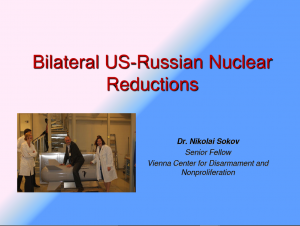
Video Recording
Dr. Nikolai Sokov, CNS Senior Fellow
2:00 PM – 2:50 PM (PST)
Workshop 1: Research Methodologies
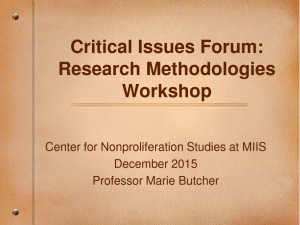
Video Recording
Marie Butcher, English Instructor, MIIS
3:00 PM – 5:00 PM (PST)
Workshop 2: Citing Sources Accurately

Video Recording
Marie Butcher, English Instructor, MIIS
Week 2
Monday, December 7th
7:30 AM – 9:00 AM (PST)
Lecture 5: The NPT Review Process and Future of Nuclear Disarmament
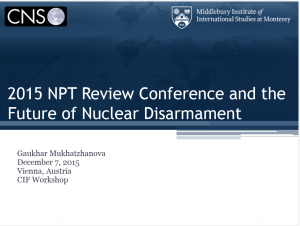
Video Recording
Gaukhar Mukhatzanova, Director, International Organizations and Nonproliferation Program
10:00 AM – 11:30 AM (PST)
Lecture 6: What are Nuclear Weapons, and the Effects of Use?: Scientific Perspectives: Part 2

Video Recording Part 1
Video Recording Part 2
Dr. Ferenc Dalnoki-Veress, Adjunct Professor and Scientist-in-Residence
3:00 PM – 4:30 PM (PST)
Lecture 7: Introduction to the Nuclear Nonproliferation and Disarmament Regimes
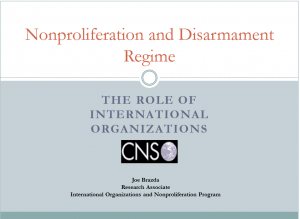
Video Recording
Joe Brazda, Research Associate, International Organizations and Nonproliferation Program
Tuesday, December 8th
2:00 PM – 3:00 PM (PST)
Lecture 8: Global Nuclear Vulnerability 1: Close Calls Case Studies
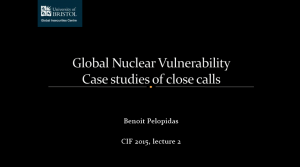
Video Recording
Dr. Benoit Pelopidas, Lecturer in International Relations, University of Bristol, UK
3:00 PM – 4:00 PM (PST)
Lecture 9: Global Nuclear Vulnerability 2: Close Calls Case Studies

Video Recording
Dr. Benoit Pelopidas, Lecturer in International Relations, University of Bristol, UK
Thursday, December 10th
4:00 PM – 4:50 PM (PST)
Workshop 3: Language: Focusing Your Message

Video Recording
Marie Butcher, English Instructor, MIIS
5:00 PM – 5:50 PM (PST)
Workshop 4: Making Effective Presentations
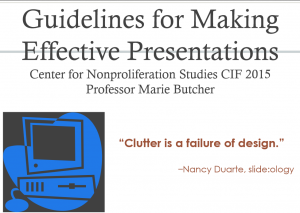
Video Recording
Friday, December 11th
2:00 PM -3:00 PM (PST)
An Overview of the Nuclear Non-proliferation Treaty

Video Recording
Masako Toki, Project Manager, Nonproliferation Education Program and CNS Research Associate
3:00 PM – 3:30 PM (PST)
Introducing Useful Resources
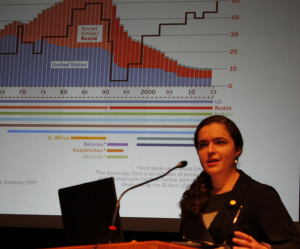
Video Recording
Masako Toki, Project Manager, Nonproliferation Education Program and CNS Research Associate
3:30 PM – 4:00 PM (PST)
Wrap Up Session and Discussion for the Spring Conference
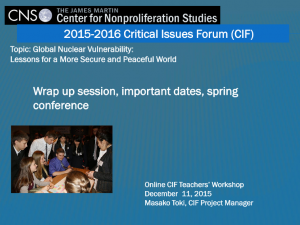
Video Recording
Masako Toki, Project Manager, Nonproliferation Education Program and CNS Research Associate
– See more at: http://sites.miis.edu/criticalissuesforum/2015/11/25/2015-2016-teachers-workshop-agenda/#sthash.LL9QyKp9.dpuf